Special Report
30 Companies Getting the Most From the Government

Published:
Last Updated:

As an economic power, the U.S. government is a juggernaut without equal. According to the Congressional Budget Office, the U.S. government spent $4.0 trillion in 2017. While the largest shares of the federal government’s annual expenditures go towards benefit programs like Social Security and Medicaid, hundreds of billions of federal dollars also end up in the coffers of just a handful of companies in the private sector.
Through its various agencies and departments, the federal government has millions of contractual obligations with private companies, both domestic and foreign. The companies and organizations benefiting from federal dollars run the gamut from drug makers to universities and research companies. However, those benefiting the most are almost exclusively health care providers and defense contractors – many of which claim Uncle Sam as their biggest customer.
24/7 Wall St. reviewed contract data from the Federal Procurement Data System to identify the companies making the most from the federal government. The government paid 30 companies at least $1.9 billion each in 2016. Four companies on this list were each awarded federal contracts worth over $13.4 billion – more than the entire budget for the Environmental Protection Agency or the Department of the Interior.
Click here to see the 30 companies making the most from the government.
Click here to see our detailed findings and methodology.

30. United Launch Alliance LLC
> Contracts won in 2016: $1.92 billion
> Largest customers: Air Force, NASA
> Revenue: $1.80 billion
> Headquarters: Centennial, CO
A joint venture between the defense and aerospace divisions of Lockheed Martin and Boeing, United Launch Alliance has been the largest provider of spacecraft launch services – mainly satellite launches – in the United States since its inception in 2006. ULA was also the only commercial provider of spacecraft launch services for the U.S. Air Force until 2016, when the USAF awarded SpaceX a contract to launch a GPS satellite into space in May 2018. In its 12-year history, ULA has logged over 120 successful launches, with purposes ranging from military intelligence, severe weather tracking, personal GPS navigation, and scientific research.
[in-text-ad]

29. Textron Inc.
> Contracts won in 2016: $1.95 billion
> Largest customers: Navy, Army, Air Force
> Revenue: $14.20 billion
> Headquarters: Providence, RI
Textron is an international conglomerate that manufactures Bell helicopters, Cessna and Beechcraft aircraft, among other brands. The company received $1.95 billion from the government in its fiscal 2016 due to contract obligations, among the most of any company. The largest customers within the federal government were the Navy, the Army, and the Air Force.
Some of the major contracts awarded to Textron in recent years include a $116.5 million contract from the Army for two dozen new RQ-7B V2 Shadow drones and a $333 million contract for 255 armored personnel carriers for the Afghan army. According to Textron, approximately 22% of the company’s 2017 revenue was generated from sales to the U.S. government.

28. Consolidated Nuclear Security LLC
> Contracts won in 2016: $2.03 billion
> Largest customers: Department of Energy
> Revenue: N/A
> Headquarters: Oak Ridge, TN
Consolidated Nuclear Security received $2.03 billion from the government in fiscal 2016, among the most of any company. In partnership with the National Nuclear Security Administration, CNS operates two of the nation’s six major nuclear weapons storage facilities. The Pantex Plant, located on 18,000 acres of land in Amarillo, Texas, manufactured nuclear weapons until the dissolution of the Soviet Union and subsequent end of the Cold War in 1991. Since then, Pantex has dismantled thousands of nuclear weapons. The other facility managed by CNS, the Y-12 National Security Complex, was originally built as part of the Manhattan Project and was the site of the manufacturing of the first atomic bomb. Since the end of the Cold War, Y-12 has also been engaged in nuclear disarmament and other weapons maintenance activities.

27. AmerisourceBergen Corporation
> Contracts won in 2016: $2.14 billion
> Largest customers: Defense Logistics
> Revenue: $153.14 billion
> Headquarters: Chesterbrook, PA
AmerisourceBergen Corporation is one of several health care companies to rank among the companies receiving the most from the U.S. government. AmerisourceBergen’s primary business is sourcing and distributing over the counter and prescription drugs to pharmacies, health care providers and other customers. Like many other health care companies on this list, medical needs of veterans and their families as well as active service men and women are the primary drivers of lucrative government deals for AmerisourceBergen.
[in-text-ad-2]

26. California Institute of Technology
> Contracts won in 2016: $2.15 billion
> Largest customers: NASA, DARPA
> Revenue: $591.50 billion (excluding JPL)
> Headquarters: Pasadena, CA
CalTech is the largest recipient of NASA contracts in the United States. The school received a total of $2.15 billion due to contract obligations from NASA in 2016, equal to roughly 11.8% of all contract expenditure by NASA that year. Much of the contract funds go to the Jet Propulsion Laboratory, a center located near the university’ campus that carries out robotic exploration of space. Among the JPL’s two dozen spacecraft are the Curiosity rover, which landed on Mars in 2012, the Juno spacecraft currently orbiting Jupiter, and the NuSTAR X-ray space black hole telescope.

25. CACI International Inc.
> Contracts won in 2016: $2.27 billion
> Largest customers: Army, Navy, General Services Administration
> Revenue: 93.5% & $4.35 billion
> Headquarters: Arlington, VA
Information technology giant CACI receives almost all of its business from the U.S. government. In CACI’s latest fiscal year, government contracts accounted for 93.5% of the company’s total revenue. The company won the largest contract in its 55-year history last fiscal year. The five-year, $1.77 billion contract will fund work on the federal government’s Joint Improvised-Threat Defeat Organization, a program that develops technology aimed at countering car bombs, roadside bombs, and other improvised explosives. The work has been instrumental in Iraq, where CACI has provided a range of information technology and intelligence services for over a decade. Since the United States entered Iraq in 2003, CACI has largely grown through a combination of acquisitions and increased contract work. CACI reported $4.35 billion in revenue last fiscal year, more than five times the revenue reported in 2003.
[in-text-ad]
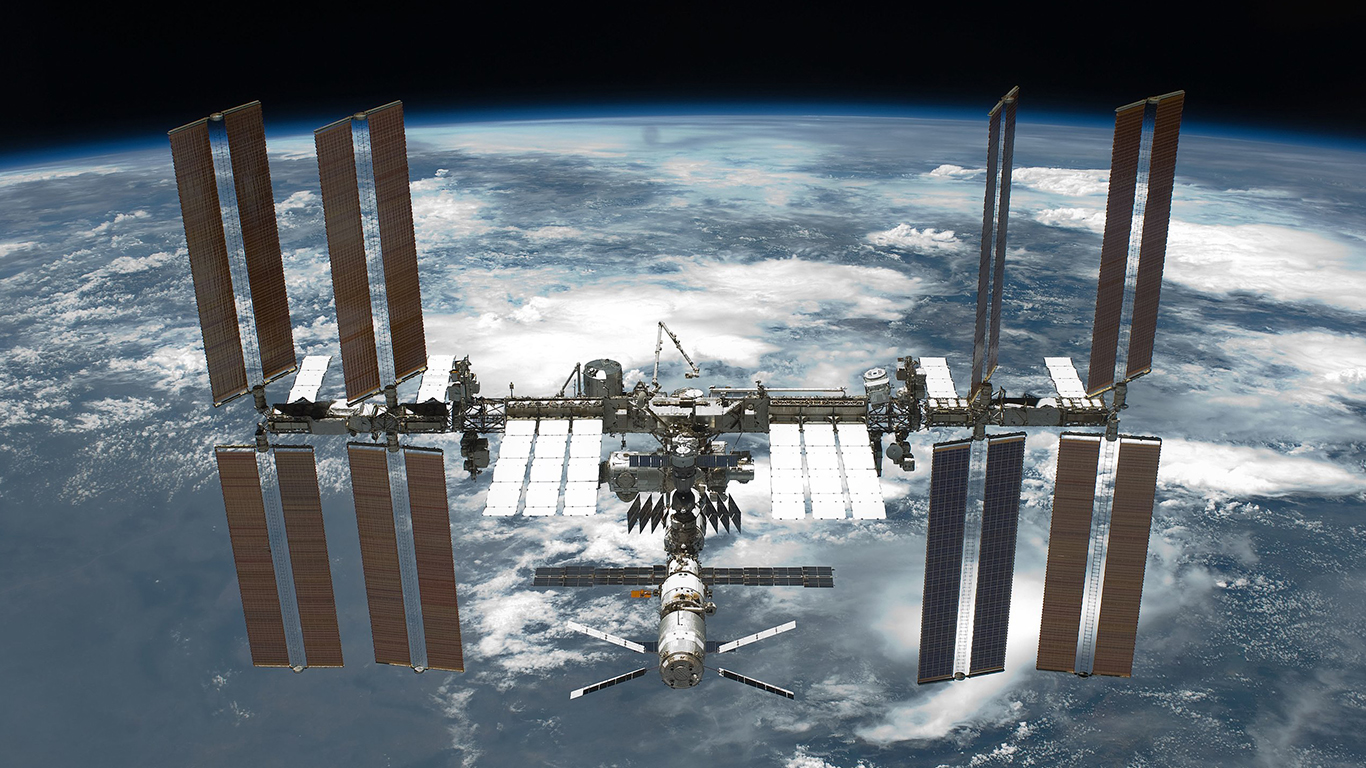
24. Honeywell International Inc.
> Contracts won in 2016: $2.27 billion
> Largest customers: Department of Energy, Army, Defense Logistics
> Revenue: $40.53 billion
> Headquarters: Morris Plains, NJ
Industrial conglomerate Honeywell International’s revenue from the U.S. government totaled $2.3 billion in 2016. Still, government dollars account for a relatively small share of the company’s overall revenue. Honeywell reported $40.5 billion in revenue in its most recent fiscal year, nearly 18 times more than the value of its government contracts in 2016.
The majority of the companies making the most from the government are defense contractors, and much of Honeywell’s business is also in defense. Two of the company’s three largest buyers in the government are the Department of Defense and the U.S. Army. The company’s products include avionics and cockpit electronic equipment, navigation tools, engines, and sensors.

23. Bell-Boeing Joint Project Office
> Contracts won in 2016: $2.28 billion
> Largest customers: Navy, Defense Logistics
> Revenue: $93.39 billion (Boeing), $14.20 billion (Textron)
> Headquarters: Amarillo, TX
The Bell and Boeing joint company has been receiving government contracts since both companies were awarded in 1983 a contract to jointly develop the V-22 Osprey combat aircraft. The partnership between Boeing and Bell Helicopter exists solely to develop and produce the aircraft. In 2016, the company received $2.28 billion in government contracts. At the beginning of 2018, Bell and Boeing won a $23.3 million federal contract from the U.S. Naval Air Systems Command to continue working on the aircraft.
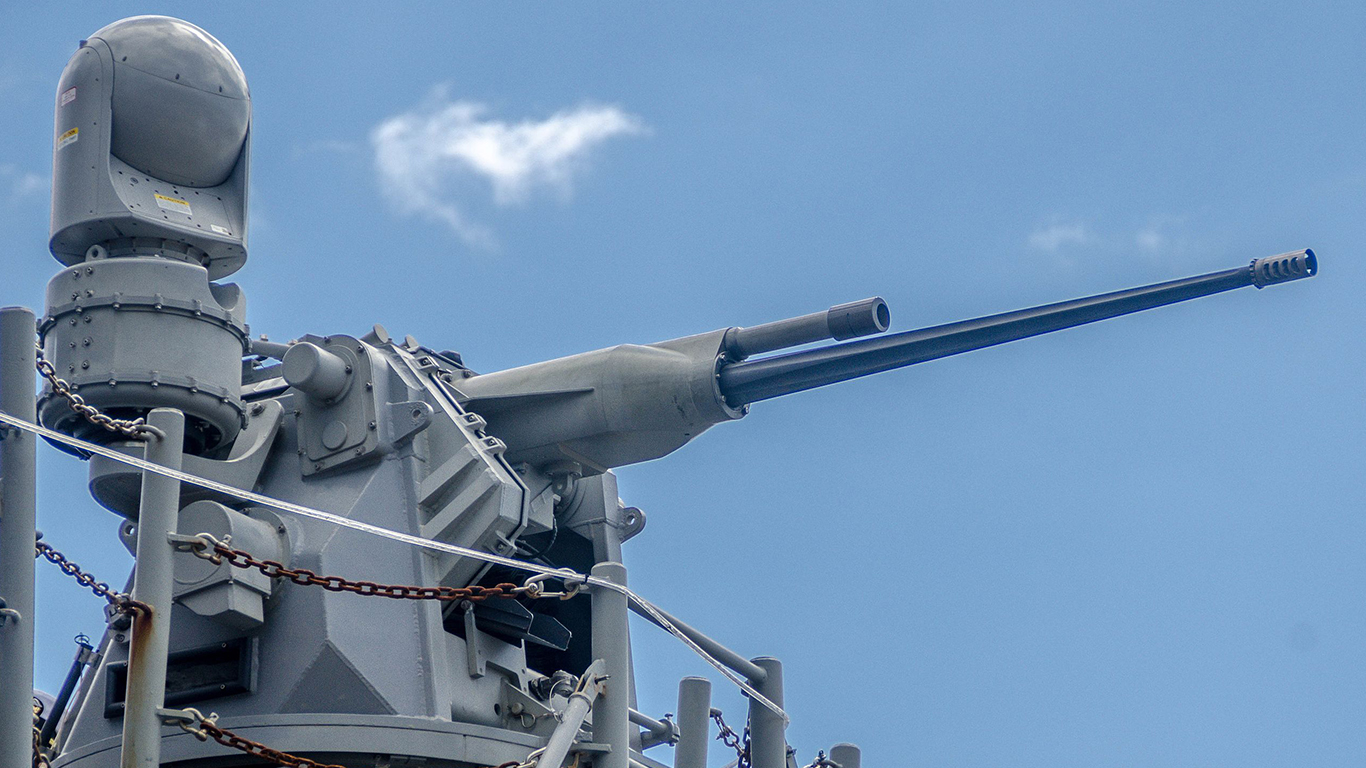
22. Alliant Techsystems Inc.
> Contracts won in 2016: $2.36 billion
> Largest customers: NASA, Army, Navy
> Revenue: $4.50 billion
> Headquarters: Dulles, VA
Government contracts account for over half of Alliant Techsystems Inc. annual revenue. Like most companies on this list, Alliant is a defense contractor, and the Defense Department accounts for more of the company’s revenue than any other government agency. The company manufactures and sells a range of large, medium, and small caliber ammunition, in addition to propulsion systems for air, land, and sea-based missiles and missile defense systems. In addition to munitions systems, the company also produces spacecraft and spacecraft components and has contracts with NASA to deliver cargo to the International Space Station.
[in-text-ad-2]

21. Los Alamos National Security LLC
> Contracts won in 2016: $2.45 billion
> Largest customers: Department of Energy
> Revenue: N/A
> Headquarters: Los Alamos, NM
Los Alamos National Security, LLC was formed by the University of California, Bechtel, BWXT Government Group, Inc., and URS, a subsidiary of AECOM. The company manages and operates the Los Alamos National Laboratory, which has the stated mission “to solve national security challenges through scientific excellence.” The lab was originally created to develop the atomic bomb during the second World War. Today the laboratory researches national security solutions using “multidisciplinary science, technology and engineering,” according to its website. Last year, the National Nuclear Security Administration announced that the company would be losing its $2.2 billion contract to manage the lab due to oversight issues and recent safety concerns.

20. Battelle Memorial Institute Inc.
> Contracts won in 2016: $2.46 billion
> Largest customers: Department of Energy, Army, Health & Human Services
> Revenue: N/A
> Headquarters: Columbus, OH
Battelle Memorial Institute is a nonprofit science and technology company that works in a variety of sectors, including energy, health and life sciences, national security, and laboratory management. While Battelle serves a range of private and corporate clients, nearly $2.5 billion of its revenue in 2016 came from various contracts with the federal government. Missile defense technology, tactical equipment, and defense systems against biological, chemical, radiological, and nuclear weapons are among the products and services the company sells to various government agencies, including the Department of Defense and the Army.
[in-text-ad]

19. Leidos Holding, Inc.
> Contracts won in 2016: $2.83 billion
> Largest customers: Health & Human Services, Army, Navy
> Revenue: $10.17 billion
> Headquarters: Reston, VA
Leidos Holding is a science, engineering, and technology company. Its work includes the development of national security solutions for the U.S. Department of Defense, the U.S. Intelligence Community, and the U.S. Department of Homeland Security among others. For fiscal year 2017, 84% of the company’s total revenues came from the U.S. government – an increase from fiscal 2016’s 81%. In 2016, Lockheed Martin separated its information systems and global solutions business segment and merged it with Leidos, effectively making Leidos the largest IT provider working for the federal government.
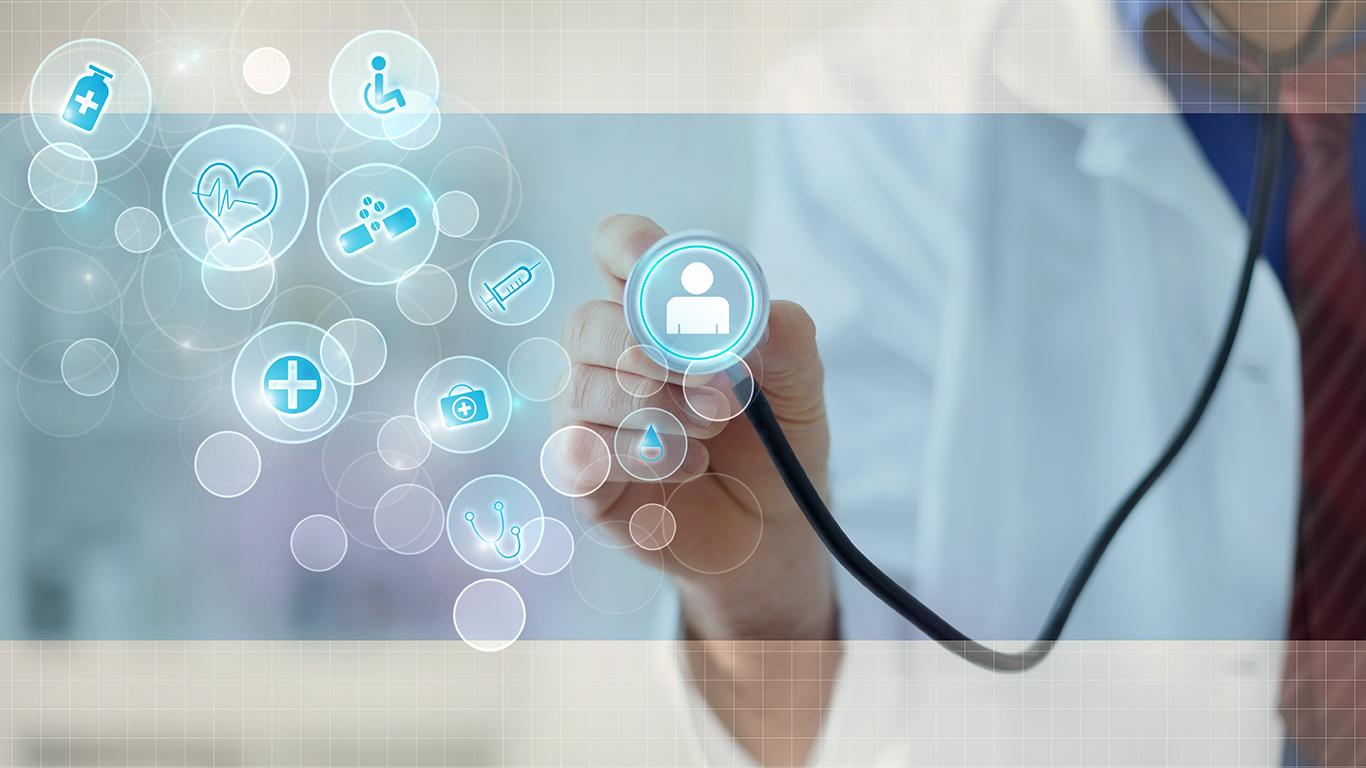
18. UnitedHealth Group Incorporated
> Contracts won in 2016: $3.01 billion
> Largest customers: Defense Health Agency, Health & Human Services, Veterans Affairs
> Revenue: $201.16 billion
> Headquarters: Minnetonka, MN
UnitedHealth Group is a private health care company that offers health benefit plants for government workers, individuals, and small and mid-size businesses. Over $3 billion of the company’s revenue in 2016 came from contracts with government agencies to provide health care for their workers.
Though UnitedHealth Group is one of the largest government contractors, the company may see a dip in federal dollars in the coming years. In 2017, the company lost a lucrative contract with the Department of Defense to provide health care to veterans and current members of the armed services and their families in certain parts of the country to Centene Corp.

17. Health Net Inc.
> Contracts won in 2016: $3.13 billion
> Largest customers: Defense Health Agency, Veterans Affairs, Department of the Interior
> Revenue: $13.45 billion
> Headquarters: Woodland Hills, CA
Health Net is a major contractor of Tricare, the health care program of the U.S. Department of Defense. Health Net became Tricare’s primary health provider in 1988 in a deal that at the time was the largest contract between the federal government and a health care provider. Since then, the DoD and Tricare have consolidated service regions and outsourced a larger share of their health care program to Health Net. Today, the company provides health care services to approximately 2.8 million active, retired, and National Guard and Reserve members, and their families across 21 states. Health Net was acquired by health care intermediary Centene in March 2016, which provides coverage to an additional 9.4 million members through Medicare, Medicaid, and commercial insurance programs.
[in-text-ad-2]

16. Harris Corporation
> Contracts won in 2016: $3.20 billion
> Largest customers: Transportation, Army, Air Force
> Revenue: $5.90 billion
> Headquarters: Melbourne, FL
The majority of defense contractor Harris Corporation’s annual revenue comes from government contracts. The company’s segments include an electronic warfare systems division and a communication systems division, which manufactures night vision and other networked and integrated communication products. Standing contracts with the government include lucrative deals with the U.S. Army, Air Force, and Special Operations Forces. In addition to the U.S. government, the company has clients in over 100 countries.

15. Science Applications International Corporation
> Contracts won in 2016: $3.26 billion
> Largest customers: Army, Navy, Defense Logistics
> Revenue: $4.45 billion
> Headquarters: Reston, VA
Science Applications International Corporation provides technical, engineering, and IT services primarily to the U.S. government. Over 95% of the company’s total revenues came from the government in fiscals 2017, 2016, and 2015. The company works with state governments in addition to the federal government. In 2017, the company signed a $165 million contract with the state of Virginia to aid the Virginia Information Technologies Agency with modernizing its technology infrastructure.
[in-text-ad]
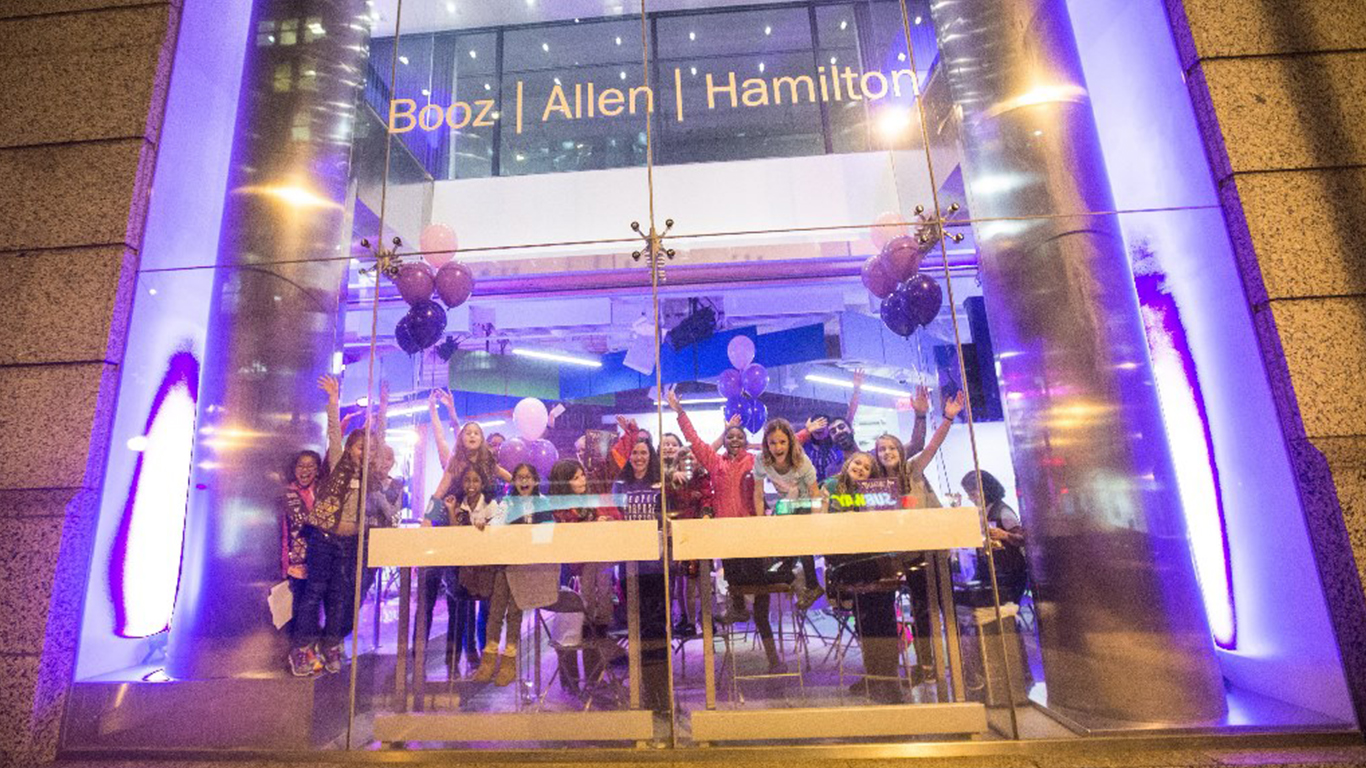
14. Booz Allen Hamilton Holding Corporation
> Contracts won in 2016: $3.58 billion
> Largest customers: General Services Administration, Army, Navy
> Revenue: $5.80 billion
> Headquarters: McLean, VA
Booz Allen Hamilton is a consulting firm, and though it has clients in the private sector, the majority of its revenue comes from government contracts. Working with several U.S. intelligence agencies, including the National Security Agency and the Department of Homeland Security, and branches of the U.S. military, much of the company’s business is confidential. It is not likely a coincidence that 70% of company employees have security clearance. Generally, Booz Allen Hamilton provides intelligence and data analysis, engineering, and cybersecurity services to government clients.

13. Humana Inc.
> Contracts won in 2016: $3.65 billion
> Largest customers: Defense Health Agency, Veterans Affairs
> Revenue: $53.77 billion
> Headquarters: Louisville, KY
Health insurance company Humana offers a number of insurance products, including supplemental Medicare plans. Federal government contracts accounted for 79% of the company’s total premiums and services revenue in 2017. The company covers the East and South regions of Tricare, the health care program of the U.S. Department of Defense. Humana has been working with the DoD since 1996.

12. AECOM
> Contracts won in 2016: $3.82 billion
> Largest customers: Department of Energy, Air Force, Defense Threat Reduction
> Revenue: $18.20 billion
> Headquarters: Los Angeles, CA
The largest design company in the world, AECOM provides a range of planning, consulting, construction, and management services to public and private clients. It has been responsible for such major projects as the masterplan for the 2016 Rio Olympic Games, management services for Chicago’s Millennium Park, and construction on both the original Twin Towers in 1973 and One World Trade Center 30 years later, as well as 9/11 cleanup efforts. The federal government is AECOM’s largest customer, accounting for approximately 22% to 24% of the company’s revenue each year. Within the federal government, AECOM’s largest client is the Department of Energy, for which the company largely provides nuclear decontamination and decommissioning services.
[in-text-ad-2]

11. Huntington Ingalls Industries Inc.
> Contracts won in 2016: $4.53 billion
> Largest customers: Navy, Homeland Security
> Revenue: $7.44 billion
> Headquarters: Newport News, VA
One of the largest defense contractors in the world, Huntington Ingalls Industries revenue from the federal government totaled $4.5 billion in 2016. The only company in the world to build U.S. aircraft carriers and one of just two to build nuclear-powered submarines, Huntington Ingalls is critical to the strength of the U.S. Navy. The company’s most recent government deals include a $60 million contract to overhaul the USS Boise, a light cruiser vessel, and a $468 million contract to begin component development for the U.S. Navy’s Columbia-class submarine, a nuclear sub slated for use in 2021.

10. Bechtel Group Inc.
> Contracts won in 2016: $4.93 billion
> Largest customers: Navy, Department of Energy, Army
> Revenue: N/A
> Headquarters: San Francisco, CA
Bechtel Group is a private engineering, construction, and project management company. With $4.9 billion in revenue exclusively from the federal government in 2016 — largely from deals with the Defense Department and Navy — it is also one of the largest defense contractors in the world. The company has worked with the U.S. government, and many of its allies, providing missile defense services and developing and maintaining military bases and other infrastructure for over 50 years. The company’s current projects with the U.S. government include a missile defense and space surveillance program at the Ronald Reagan Ballistic Missile Test Site in the Marshall Islands.
[in-text-ad]

9. L3 Technologies, Inc.
> Contracts won in 2016: $5.06 billion
> Largest customers: Air Force, Army, Navy
> Revenue: $9.57 billion
> Headquarters: New York, NY
L3 Technologies is a company that provides intelligence, surveillance, and reconnaissance products and services for land, sea, and space missions for a variety of government and commercial customers. In the company’s latest fiscal year, the federal government accounted for 70.0% of its total revenue. Foreign governments accounted for 14.8% of revenue, and commercial clients accounted for 15.2%. One of the most recent deals between the U.S. government and L3 was a $37.6 million maintenance contract under which the company will provide support to the Navy’s T-45 Goshawk aircraft system.

8. BAE Systems plc
> Contracts won in 2016: $5.15 billion
> Largest customers: Navy, Army, Air Force
> Revenue: $25.58 billion
> Headquarters: Farnborough, United Kingdom
BAE Systems’ revenue from the U.S. government in 2016 was larger than any other company based in a foreign country. The U.K.-based company made nearly $5.2 billion in 2016 in U.S. taxpayer dollars. A major defense contractor, BAE Systems designs and manufactures fighter jets, artillery systems, electronic equipment, and surface combat vehicles. Over a third of BAE’s 83,100 employees are based in the United States.

7. United Technologies Corporation
> Contracts won in 2016: $6.47 billion
> Largest customers: Navy, Army, Air Force
> Revenue: $59.84 billion
> Headquarters: Farmington, CT
United Technologies Corporation has worked on over 150,000 contracts with government departments such as the Department of Defense, National Aeronautics and Space Administration, and State Department since 2007. Much of the company’s government business is related to aerospace products, developed by subsidiaries UTC Aerospace Systems and Pratt & Whitney. In December of last year, the U.S. Air Force awarded company a $6.7 billion contract to maintain its F119 aircraft engines, which are used in the USAF’s Lockheed Martin F-22 Raptor fighter jets.
[in-text-ad-2]
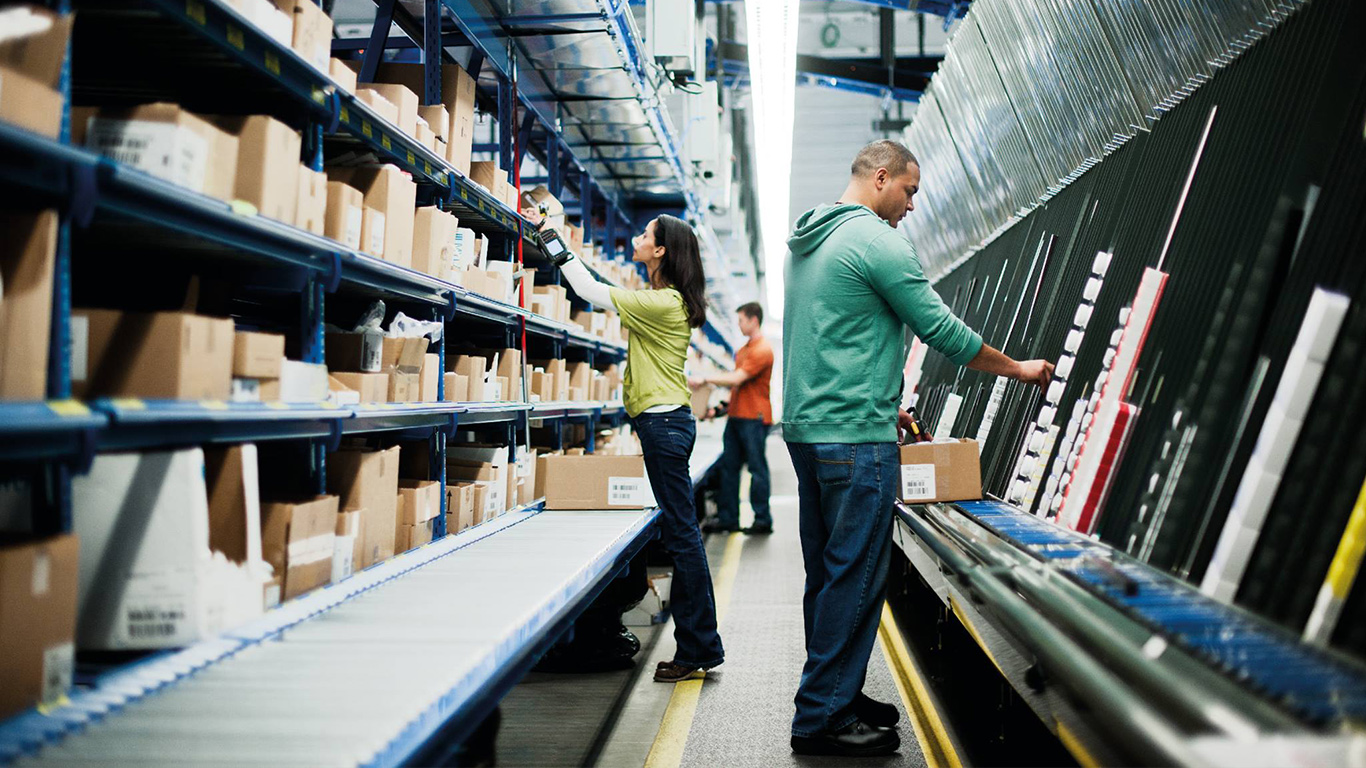
6. McKesson Corporation
> Contracts won in 2016: $8.64 billion
> Largest customers: Veterans Affairs, Defense Logistics, Health & Human Services
> Revenue: $198.53 billion
> Headquarters: San Francisco, CA
McKesson Corporation is one of several health care companies to receive billions in U.S. taxpayer dollars in 2016. Through its subsidiaries, the company supplies a range of branded and generic pharmaceuticals, surgical supplies, and electronic infrastructure to health care providers. The Department of Veterans Affairs is one of the company’s largest clients, and U.S. government contracts accounted for $8.6 billion of the company’s 2016 revenue.
McKesson is one of several companies being sued by local governments in West Virginia for failing to comply with state and federal laws that might have prevented the opioid crisis currently ravaging the state.
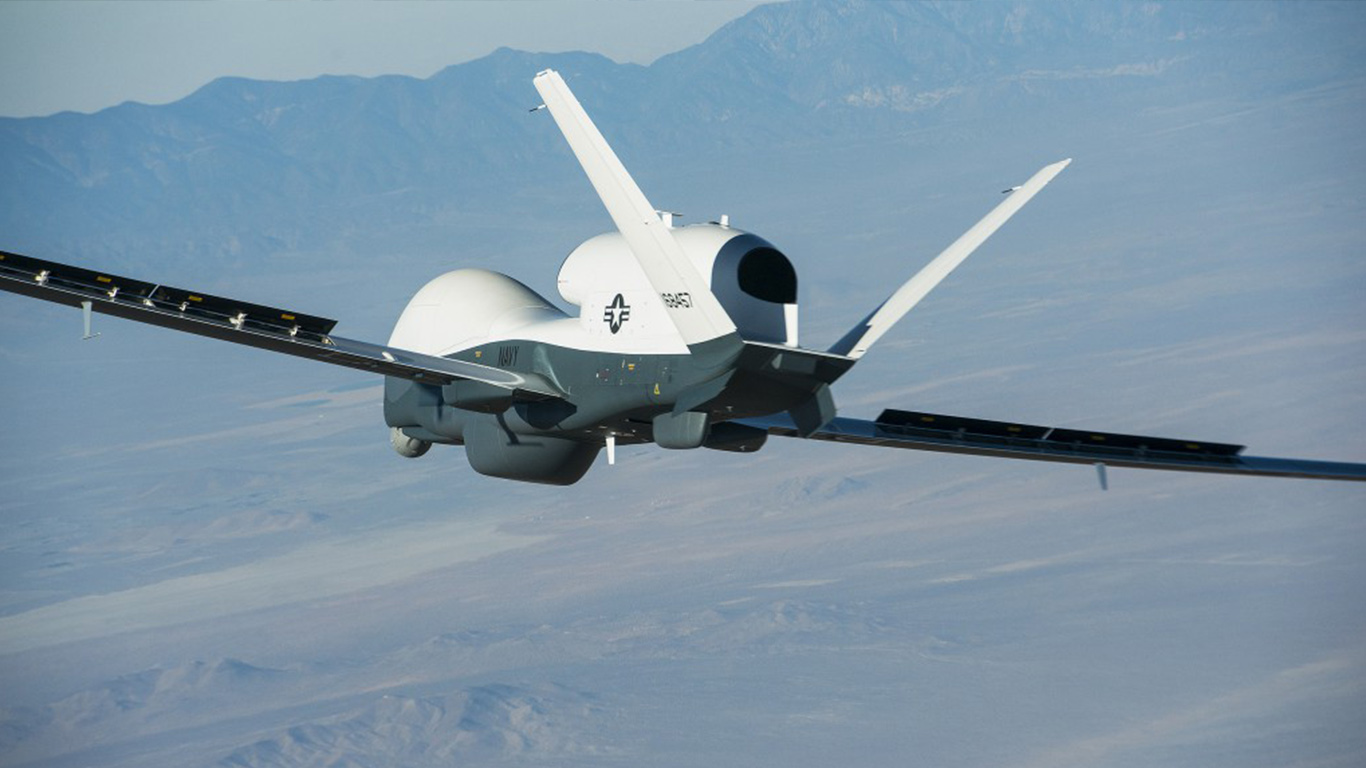
5. Northrop Grumman Corporation
> Contracts won in 2016: $11.91 billion
> Largest customers: Air Force, Navy, Army
> Revenue: $25.80 billion
> Headquarters: Falls Church, VA
Northrop Grumman is one of several companies on this list that are virtually indispensable to American military might. The company manufactures and services the iconic B-2 Spirit Stealth Bomber — which the U.S. military has deployed in Iraq, Afghanistan, and most recently in Libya. Adjusted for inflation, a single B-2 bomber costs over $2 billion, and the U.S. Air Force currently has 20 in operation. The company’s other business segments include drone manufacturing, cyber security, and logistics. Northrop Grumman revenue from federal government contracts totaled $11.9 billion in 2016 alone.
[in-text-ad]

4. Raytheon Company
> Contracts won in 2016: $13.47 billion
> Largest customers: Navy, Army, Air Force
> Revenue: $25.35 billion
> Headquarters: Waltham, MA
The Raytheon Company is a U.S. defense contractor that manufactures weapons and electronics, including guided missiles, among other services. In fiscal 2017, sales to the U.S. government accounted for 67%, or $16.86 billion, of the company’s total net sales. In recent years, Raytheon has also been contracted to aid in cyber defense, including a $1 billion agreement with the Department of Homeland Security.

3. General Dynamics Corporation
> Contracts won in 2016: $14.50 billion
> Largest customers: Navy, Army, Health & Human Services
> Revenue: $30.97 billion
> Headquarters: Falls Church, VA
General Dynamics Corporation is another aerospace and defense company that derives over half – 61% in 2017 – of its revenue from the U.S. government. U.S. commercial customers accounted for 15% of revenue that year, non-U.S. commercial customers for 13%, and non-U.S. government customers for 11%. Since fiscal year 2007 the company has worked on government contracts worth a total of $163 billion. Its contracted government work in fiscal year 2016 totalled $14.5 billion.
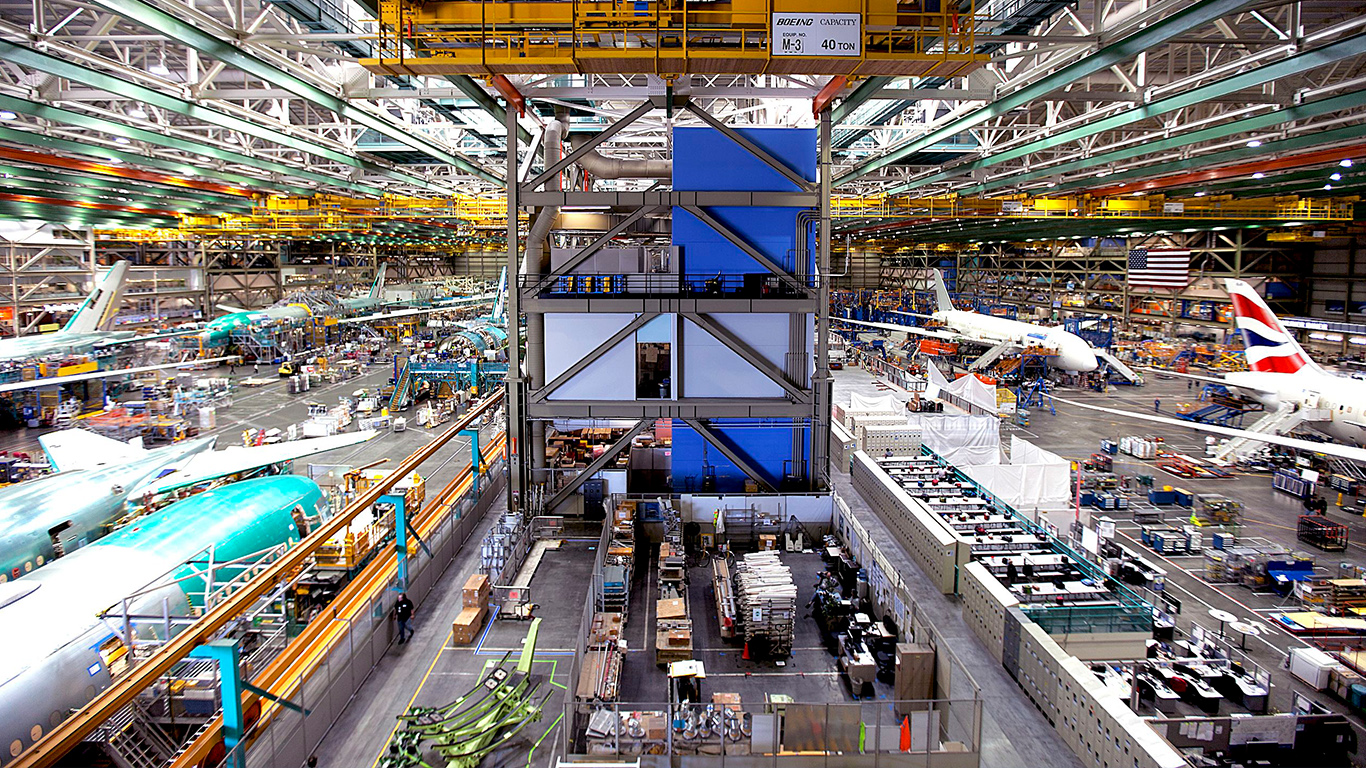
2. The Boeing Company
> Contracts won in 2016: $26.50 billion
> Largest customers: Air Force, Navy, Army
> Revenue: $93.39 billion
> Headquarters: Chicago, IL
Boeing is the world’s largest aerospace company and the 24th largest U.S. company by revenue. While the company may be most well known for its commercial airplanes, it also has a large defense, space, and security segment — which lists the U.S. Department of Defense as its primary customer. In 2017, the DoD accounted for approximately 79% of revenue at this segment. Boeing’s government customers include all of the branches of the U.S. military, NASA, the Federal Aviation Administration (FAA) and the Department of Homeland Security.
[in-text-ad-2]

1. Lockheed Martin Corporation
> Contracts won in 2016: $43.40 billion
> Largest customers: Navy, Air Force, Army
> Revenue: $51.05 billion
> Headquarters: Bethesda, MD
The largest defense contractor in the world, Lockheed Martin made more from contracts with the federal government in 2016 than any other company. The company received $43.40 billion from the federal government in its 2016 fiscal year — equal to about 92% of the company’s revenue in its own fiscal 2016.
Lockheed Martin’s business segments include missile defense, radar, naval warfare technology, fighter jets and intercontinental ballistic missiles. Recently, the company inked a 60-year deal for the F-35 Joint Strike Fighter jet, valued at an estimated $1 trillion — the most expensive weapons deal in Defense Department history. The F-35 is one of the newer additions to the company’s lineup, which includes the F-22 Raptor and F-16 fighter jets, the C-130 Hercules airlifter, and following Lockheed’s 2015 acquisition of Sikorsky, the Black Hawk helicopter.
The United States spent about $600 billion on defense in 2017 – roughly half of its discretionary budget. The U.S. has a larger military budget than the next eight countries combined, including nations like Russia, China, and France.
Due to the demands placed on the U.S. military, the companies benefiting the most from government spending are, more often than not, defense contractors. The Department of Defense or a branch of the armed services rank as the biggest government spender for 24 of the 30 companies on this list.
Government spending with defense companies is driven in large part by the high cost of military technology. Stealth bombers, fighter jets, and nuclear-powered submarines integrate state-of-the-art technology, often aiming to improve and provide the best defensive, offensive, and protective tools — and stay ahead of the curve. As a result, racking up a bill with defense companies is not difficult. A single F-35 fighter jet from Lockheed Martin costs just under $100 million — and the company plans on building 2,400 of them in the coming years to meet contractual obligations. Similarly, a single Northrop Grumman B-2 bomber costs an estimated $2 billion, adjusted for inflation, and the U.S. Air Force currently has 20 in operation.
In addition to defense contractors, health insurance companies make up a considerable portion of this list. As the single largest employer in the country, the federal government provides jobs with benefits to millions of people, not including veterans and their families many of whom the government is obligated to provide insurance. Partially as a result, contractors like Humana and UnitedHealth Group each received billions in federal dollars in 2016.
It is no coincidence that the majority of companies on this list are American. The Buy American Act, signed into law by President Hoover in 1933, restricts the ability of government agencies and departments to procure from foreign companies. Of the 30 companies on this list, U.K.-based BAE Systems is the only one headquartered outside of the United States. Even still, over a third of all BAE employees work in the United States.
While all of the companies on this list benefit tremendously from government contracts, some are more dependent on federal funds than others. For example, the $43 billion the government paid to Lockheed Martin in fiscal 2016 due to contract obligations accounted for about 92% of its total revenue that year. Meanwhile, for companies like Boeing, the private sector accounts for a much larger share of their business. Boeing-built commercial airliners total more than 10,000 and comprise nearly half of all in-service commercial aircraft worldwide. With such a large commercial segment, payments received through federal government contracts accounted for just 28% of the company’s revenue in 2016.
To identify the companies gaining the most from the federal government, 24/7 Wall St. reviewed data compiled by the General Services Administration and accessed through the Federal Procurement Data System. Companies were ranked on total payments received from U.S. government contract obligations in the 2016 government fiscal year. Data on individual contracts also came from the Federal Procurement System. Corporate revenues came from publicly available financial documents when available and are for the most recent fiscal year, which does not necessarily align with the federal government’s fiscal year.
If you’re one of the over 4 Million Americans set to retire this year, you may want to pay attention.
Finding a financial advisor who puts your interest first can be the difference between a rich retirement and barely getting by, and today it’s easier than ever. SmartAsset’s free tool matches you with up to three fiduciary financial advisors that serve your area in minutes. Each advisor has been carefully vetted, and must act in your best interests. Start your search now.
Don’t waste another minute; get started right here and help your retirement dreams become a retirement reality.
Thank you for reading! Have some feedback for us?
Contact the 24/7 Wall St. editorial team.